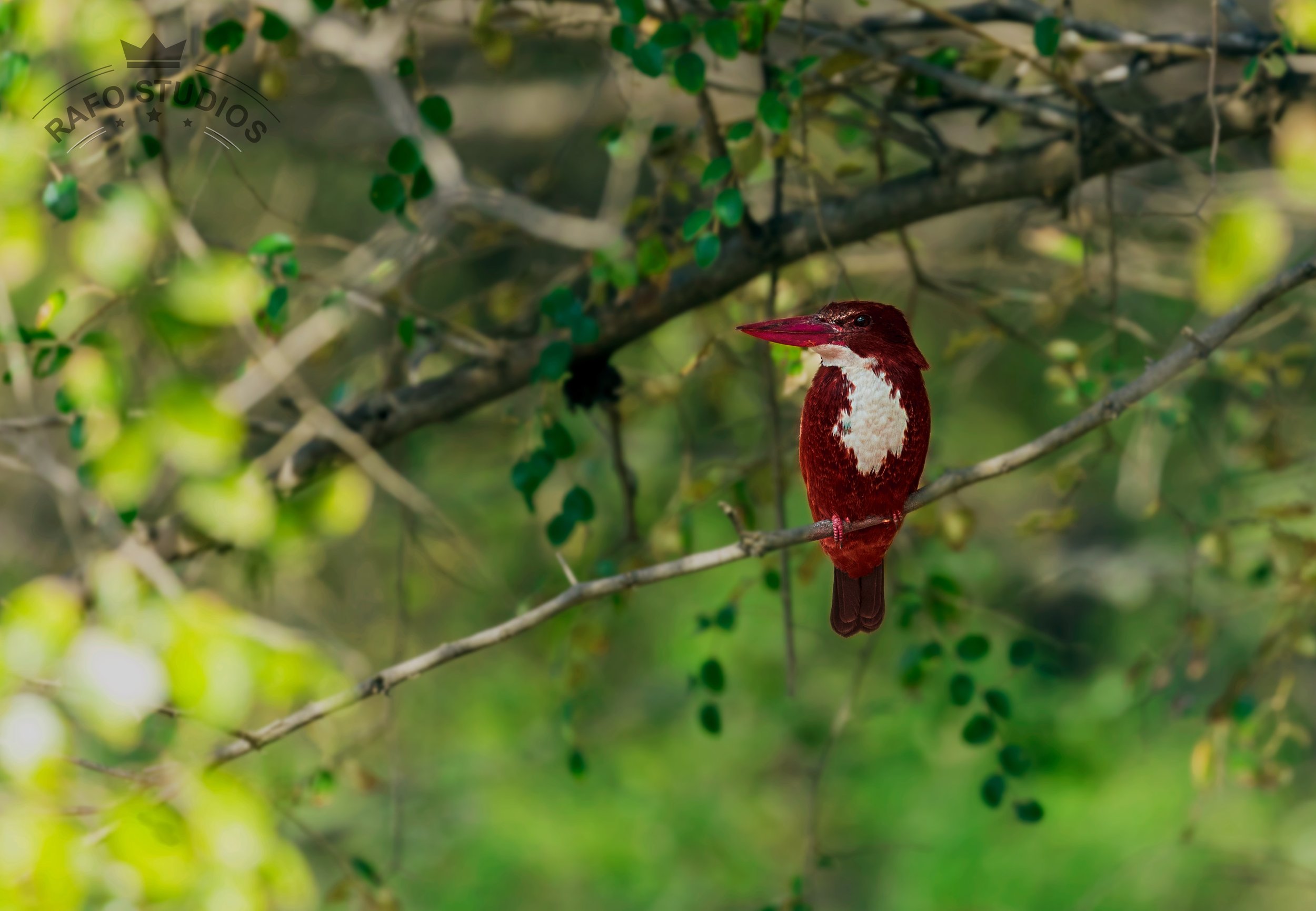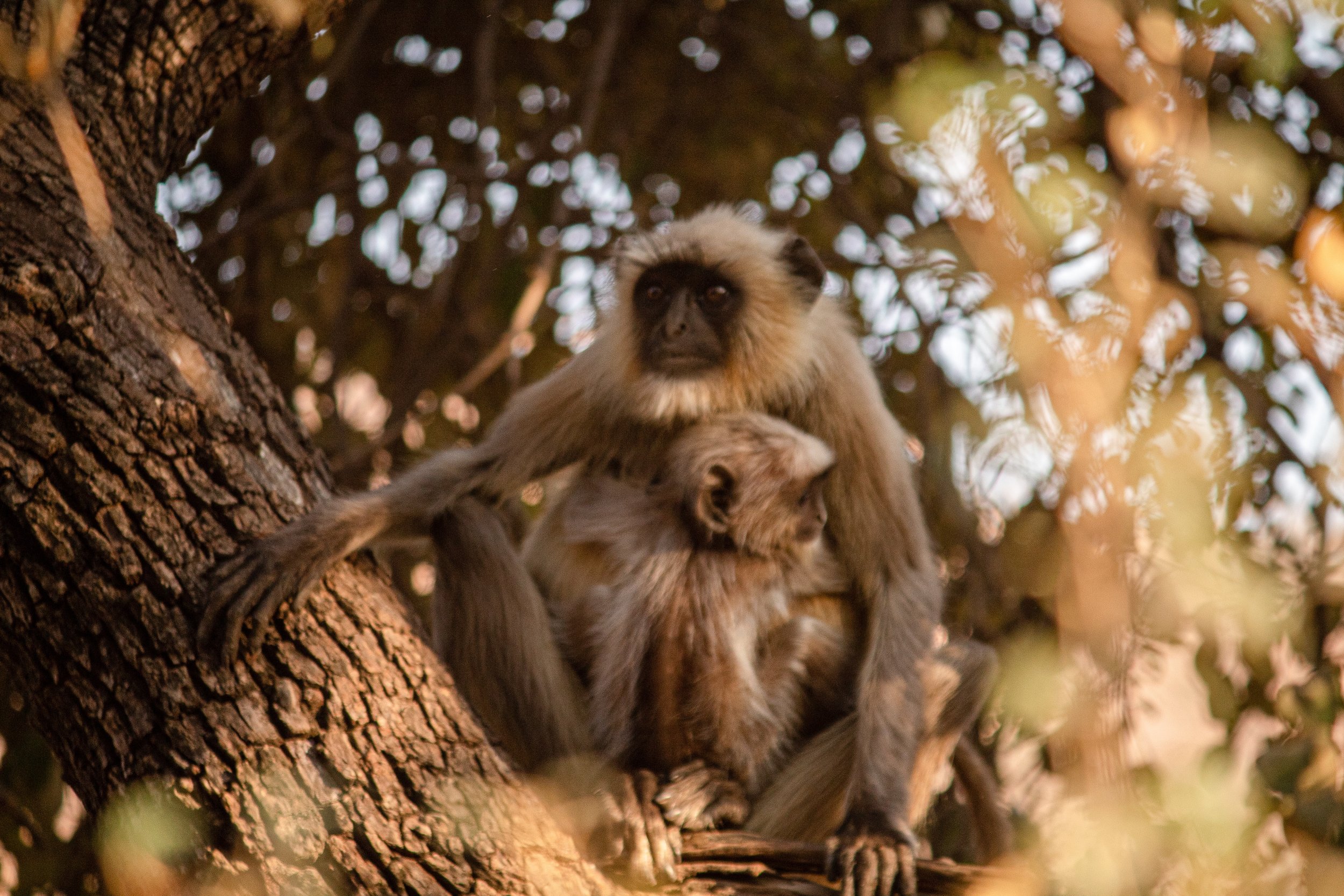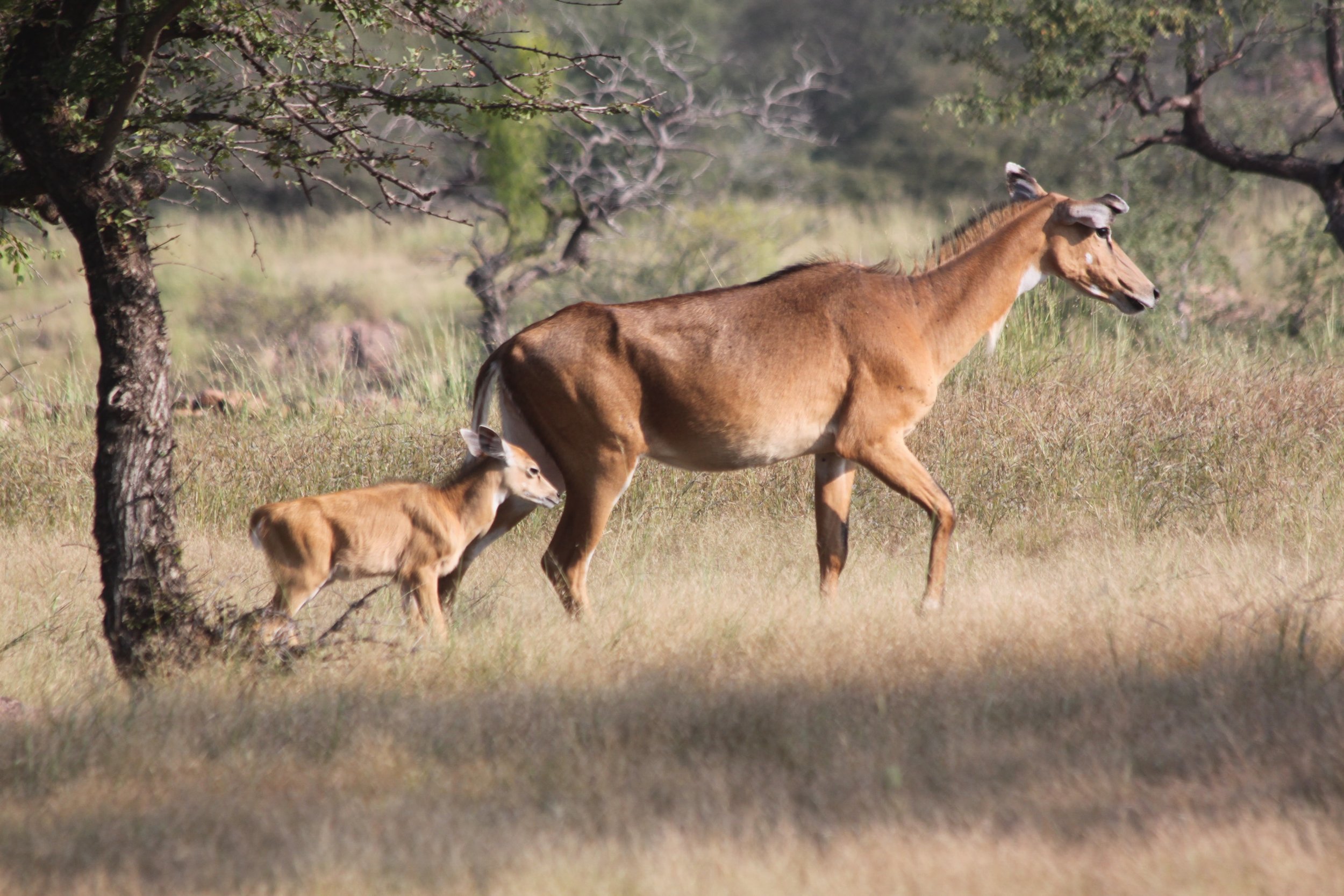— Written primarily based on Inputs by Harry Fernandes, Regional Director of India & Sri Lanka.
In the contemporary era, hopping onto a 4x4 adventure into the wilderness no longer encapsulates the essence of Wildlife Safaris. Safaris have transformed into an opportunity to responsibly connect with nature, respect the wild, foster enriched experiences, and contribute to an evolving narrative.
In an exclusive interview with Harry Fernandes, the Regional Director of India & Sri Lanka at Aman-i-Khas, we delve into the nuanced details of how travellers can embark on sustainable safaris while maximizing their overall experience. Fernandes' insights illuminate the ways tourists can make a positive impact, the role of tourism in mitigating human-animal conflicts, and Aman's distinctive approach to involving local communities. He also imparts guidelines for respectful wildlife viewing, shares Aman-i-Khas's conservation initiatives, and recounts memorable wildlife sightings.
Explore the delicate equilibrium between an exclusive safari experience and environmental preservation through this comprehensive handbook.
PL: How can tourists make sure their safari trip is sustainable?
Harry Fernandes: We believe that every individual can play a meaningful role in conservation efforts. We are deeply committed to fostering a sense of responsibility and connection between our guests and the delicate ecosystems of Ranthambore. Since its inception, Aman-i-Khas has championed a transformative journey that extends far beyond luxury hospitality. Our commitment to sustainability, conservation, and community upliftment has not only redefined the concept of a resort but has also set a benchmark for responsible and meaningful tourism.
Every initiative we undertake contributes to a larger narrative of preserving nature's wonders for generations to come:
- Wildlife Education and Awareness: Guests are encouraged to engage in wildlife education sessions and guided tours led by our expert naturalists. These experiences offer insights into the diverse flora and fauna and foster a deeper understanding of the ecosystem's challenges.
- Community Development & Engagement: Aman-i-Khas is dedicated to supporting local villages through sustainable development initiatives. Guests can actively support these efforts by participating in community engagement programs that focus on education, healthcare, and skill development.
- Responsible Tourism Practices: Guests can embrace responsible tourism practices during their stay, such as minimizing plastic usage, conserving water, and respecting wildlife habitats. These seemingly small actions collectively contribute to preserving the natural environment.
- Pioneering Sustainable Initiatives: Aman-i-Khas blazed a trail by becoming the first resort in the region to pioneer various sustainable practices. Our ten-tented camp showcases clean-energy inventions, eco-building innovations, organic farming (we operate a four-acre farm), community outreach, hyperlocal employment, and inclusivity and empowerment. From solar power utilization to efficient waste management, we have set new standards in eco-friendly operations that minimize our ecological footprint.
PL: What guidelines or etiquette do you recommend for guests to ensure respectful and non-disruptive wildlife viewing?
Harry Fernandes: With over 352 species of birds and 54 species of mammals known to habitat or migrate in Ranthambhore, wildlife is visible at every turn. Following appropriate etiquette for viewing wildlife will dramatically increase the chance of spotting animals in their natural habitat. We recommend the below pointers to all of our guests to ensure minimal disturbance during their safari:
Observe animals from a safe distance.
Avoid sudden movements and loud noises when in close proximity to animals.
Attraction devices are prohibited.
Avoid chasing or harassing animals under any circumstances.
Learn and be mindful of wild animals’ signals indicating that you are too close.
All game drives are escorted by an expert naturalist, who conducts a briefing before every safari.
Following these instructions is of paramount importance and ensures the safety of both the guests and the animals.
PL: In your experience, what time of the year do you consider to be the most rewarding for wildlife sightings in Ranthambore? Are there specific seasons or months when certain species are more active or visible?
Harry Fernandes: The core zones of the vast Ranthambore National Park are open to safari from October to May. The best times to see the Royal Bengal tiger is from November to April. Ranthambore is the most renowned national park in Northern India, offering the world’s driest and hottest tiger habitat. Each season brings its own beauty, whilst the spring and summer seasons increase the chance of tiger sightings, due to fewer water sources and sparse vegetation.
PL: Can you share some of the most memorable or rare wildlife sightings that guests at Aman have been fortunate to witness?
Harry Fernandes: We are fortunate to be surrounded by a vast array of wildlife, and Ranthambore National Park is one of the best places to see tigers in the world. Ranthambore National Park boasts one of the highest tiger densities in India. This natural haven is home to a substantial population of these majestic big cats, offering a remarkable chance to witness these elusive creatures in their natural habitat. Ranthambore's allure extends beyond tigers, encompassing a rich diversity of indigenous flora and fauna. From leopards, sloth bears, and crocodiles to over 300 avian species, the park showcases a harmonious ecosystem that encapsulates the essence of Indian wildlife.
Some rare sightings include:
2 years ago, one of our guests spotted a mother tigress with all 4 cubs in one frame, something that had not been photographed in the last 20 years.
A rare sloth bear sighting on the hunt; sloth bears are omnivorous, and their diet consists of insects, termites, fresh shrubs, and honey. This was the first record of a sloth bear hunting a deer fawn.
One of our guests experienced a mother tigress chasing a leopard. Generally, tigers are heavy and can’t climb trees. Our guest saw a famous tigress, “Noor”, chasing a leopard and climbing almost halfway up a tree, which is very unusual for the species.
In exceptional circumstances, we once found a father tiger raising its cubs. The cubs lost their mother, and their father raised the cubs and protected them from other potential predators.
PL: How can travellers be mindful of eco-friendly wildlife tourism and activities that harm the environment? Are there clear signs or warnings they should watch out for?
Harry Fernandes: Travellers can adopt a mindful and eco-friendly approach to wildlife tourism by being aware of their environmental impact and making responsible choices. Here are some guidelines and signs to watch out for:
- Be mindful of your carbon footprint: Choose eco-friendly transportation options, offset carbon emissions, and minimize your overall environmental impact during your travels.
- Research & choose responsible operators: Look for tour operators and guides with a reputation for responsible wildlife tourism practices. Check for certifications or memberships in organizations that promote sustainable and ethical tourism.
- Choose Eco-Friendly Accommodation: Opt for accommodation that has environmentally friendly practices, such as waste reduction, energy efficiency, and water conservation.
- Minimize plastic usage: Reduce your plastic footprint by bringing a reusable water bottle and avoiding single-use plastic. Dispose of waste properly and participate in recycling programs.
- Support conservation initiatives: Contribute to local conservation efforts by supporting initiatives that work towards protecting wildlife and preserving their habitats. This can include making donations or participating in community-based conservation projects.
- Avoid purchasing wildlife souvenirs: Refrain from buying products made from endangered species or supporting the trade in wildlife souvenirs. This helps combat illegal wildlife trafficking.
PL: How can tourism reduce human-animal conflicts?
Harry Fernandes: Tourism can play a role in reducing human-animal conflicts through responsible and sustainable practices. Aman-i-Khas transcends the realm of luxury hospitality to become a dynamic agent of positive change. Our commitment extends beyond providing exceptional experiences to our guests; it encompasses our role as stewards of the land, protecting the delicate balance of nature, and ensuring the preservation of Ranthambore's rich biodiversity.
Here are several strategies and approaches that can help mitigate these conflicts.
- Educational programs: Implement educational programs for tourists to raise awareness about the local wildlife, their behaviour, and the potential consequences of human interaction.
- Local Community Involvement: Engage communities in wildlife conservation efforts, making them stakeholders in protecting their natural resources.
- Infrastructure planning: Develop well-designed infrastructure, such as viewing platforms and trails, to ensure that tourists can observe wildlife without disturbing their natural habitats or behaviour. Establish designated routes and areas for tourism activities to minimize the impact on wildlife.
PL: What is the importance of employing Local People for tourism like Aman Does?
Harry Fernandes: Aman is a company with purpose; we care about the people that surround us including guests, our employees and the local communities. Just as local craftsmanship is celebrated by our properties across the globe, there is a focus on hyper-local human-led hospitality, and we choose to recruit most of our hospitality talent from the local area. By supporting employment opportunities in the region, in return, our Amansantis reflect the genuine soul and cultural spirit of a destination.
By providing meaningful employment opportunities to the local community, Aman-i-Khas contributes to the economic growth of the region. Our commitment to hiring locally ensures that the benefits of tourism reach those who call this land home. Of our camp’s team of 80 employees, only 10% come from outside the immediate Rajasthan region.
PL: Could you shed light on the conservation initiatives or projects that Aman-i-Khas is involved in to protect and preserve the natural habitat and species within the reserve?
Harry Fernandes: Aman-i-Khas, with its unwavering commitment to conservation and sustainability, plays a pivotal role in bolstering animal conservation efforts within the Ranthambore Reserve. Our dedication is rooted in preserving the delicate balance of nature and nurturing the habitats that support the region's diverse flora and fauna. Here are some of the impactful ways Aman-i-Khas contributes to animal conservation:
- Reforestation Initiatives: Recognizing the critical importance of combating deforestation, Aman-i-Khas takes proactive measures to restore and preserve the natural habitat. Through our reforestation efforts, we plant approximately 5000 tree saplings each year, contributing to the restoration of the ecosystem's green cover. This initiative not only helps in reducing habitat loss but also provides a sanctuary for wildlife to thrive.
- Partnerships with NGOs: Aman-i-Khas collaborates with Pathik NGO, an organization deeply committed to tiger conservation. Our partnership with Pathik empowers us to engage in impactful initiatives that foster greater awareness and understanding of the challenges facing tigers and their habitats. Additionally, our participation in the "Beat Plastic Campaign" underlines our dedication to reducing plastic pollution and safeguarding the environment for current and future generations.
- Support for Government Initiatives: Aman-i-Khas is actively involved in supporting government-driven conservation programs. One significant example is our participation in the "Save Tiger Programme" initiated by the forest department. The initiative is commemorating 50 years of tiger conservation at Ranthambore this year which is a remarkable milestone to celebrate.
PL: With the growing interest in sustainable tourism, how does Aman-i-Khas balance providing an exclusive experience for guests while ensuring minimal impact on the environment?
Harry Fernandes: Situated on the threshold of the Ranthambore reserve, Aman-i-Khas offers incomparable privacy with its philosophy of simple, sustainable luxury, curating exceptional experiences that elevate the wildlife encounter for its guests.
- Curated Experiences: Aman-i-Khas goes beyond traditional hospitality to curate experiences that immerse guests in the natural world. From enchanting forest dinners under the starlit sky to thoughtfully designed safaris, every aspect of the guest experience is carefully considered to create an unforgettable journey. Aman-i-Khas boasts a team of highly trained naturalists who guide guests through the nuances of the wilderness. These experts offer insightful narratives about the flora, fauna, and ecosystems, enhancing guests' understanding and connection to the environment.
- Tented Serenity and personalised service: Unlike conventional luxury accommodation, Aman-i-Khas is an intimate tented camp. These tents blend seamlessly with the natural surroundings, providing guests with a serene and immersive experience that harmonizes with the wilderness. Guests are attended to with the utmost care, ensuring that their every need is met while maintaining an unobtrusive presence that respects the tranquillity of the environment.
- Sustainable Luxury: Aman's commitment to sustainability enhances the guest experience by providing a sense of purpose. Guests are part of a greater conservation effort, allowing them to engage with the environment in a way that extends beyond their stay. Aman-i-Khas offers an intimate, boutique-style setting, fostering a deeper connection with the natural surroundings, and allowing guests to immerse themselves in the wilderness without distractions.
PL: How do Safari Guides make sure that each safari adventure is not only enjoyable but also educational for the guests?
Harry Fernandes: With their vast knowledge of Rajasthan’s wildlife, history and cultural traditions, Aman-i-Khas guides ensure deeply personal and enlightening experiences, whether tiger spotting in Ranthambore National Park, exploring dramatic Khandar Fort, birdwatching in the lush Banas riverbed or taking a camel safari through villages on the park’s outskirts.
Safari guides play a crucial role in ensuring that each safari adventure is not only enjoyable but also educational for our guests. One of the key aspects is their in-depth knowledge of the local flora and fauna. Our guides undergo extensive training to stay updated on the ecology, behaviour, and conservation status of the wildlife in the area.
During the safari, guides often share fascinating insights about the animals and the region, including some lesser-known or surprising facts:
- Historical UNESCO Heritage Site: Ranthambhore isn't just a sanctuary for wildlife; it's also home to a UNESCO World Heritage Site. The Ranthambhore Fort, standing majestically within the park, is a testament to India's rich history and architectural legacy. Exploring this formidable fortification adds a layer of cultural exploration to your wildlife adventure, seamlessly blending heritage and nature into a single, unforgettable experience.
- Legendary Tigress Macchali: Ranthambhore's fame is intertwined with the legacy of Tigress Macchali. Known as the "Queen of Ranthambhore," Macchali's bloodline has left a lasting mark on the park's tiger population. Her lineage has contributed to the thriving tiger population that Ranthambhore proudly boasts today. Witnessing these descendants of Macchali evokes a sense of connection to the park's history and the remarkable survival of these iconic creatures.
Credit for all Photos: Aman-i-Khas
For your next adventure safari, explore the Ranthambore Wildlife Reserve with Aman-i-Khas. Get exclusive deals on stays and experiences when you book with us. Contact us to know more.











































Wellness escapes today go far beyond massages and yoga mats. Experiences like forest bathing in Japan, wild swimming in Scandinavian fjords, sleep therapy in Switzerland and even energy healing in the Costa Rican jungle promise not just relaxation but a deep, sensory reawakening.